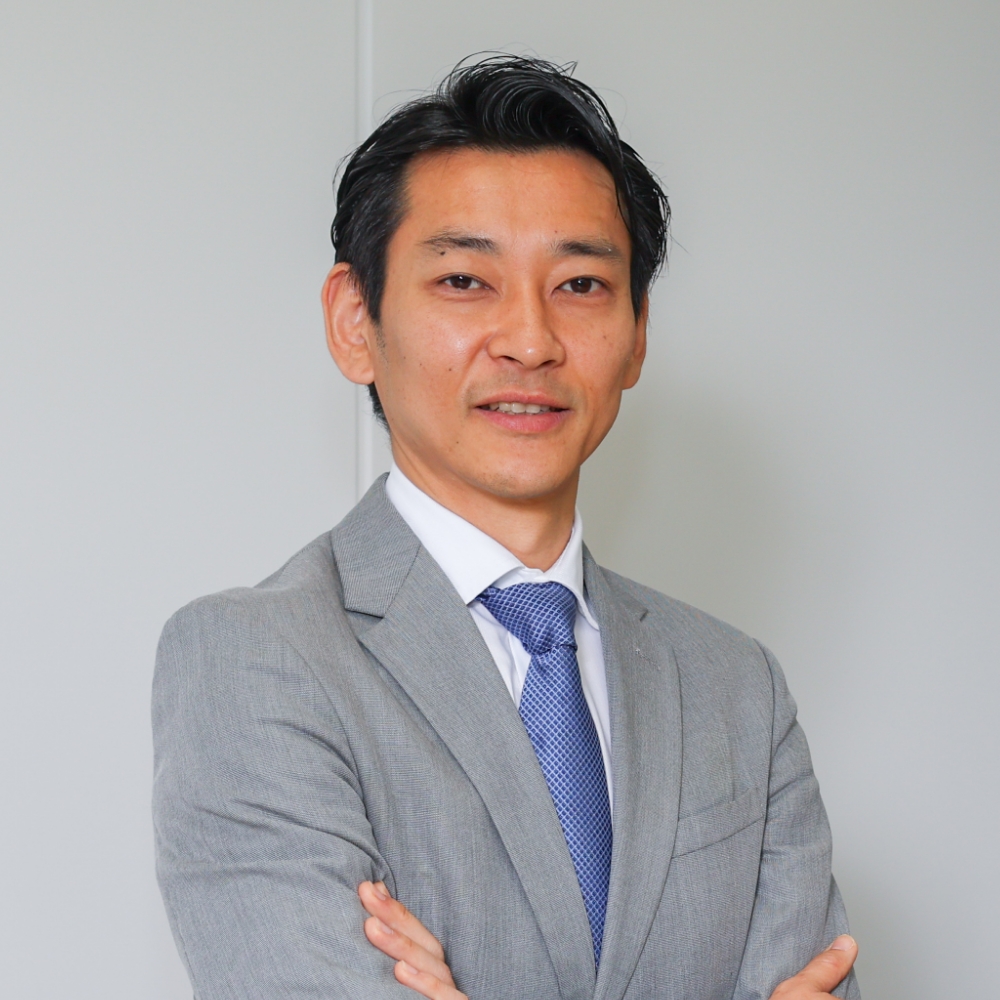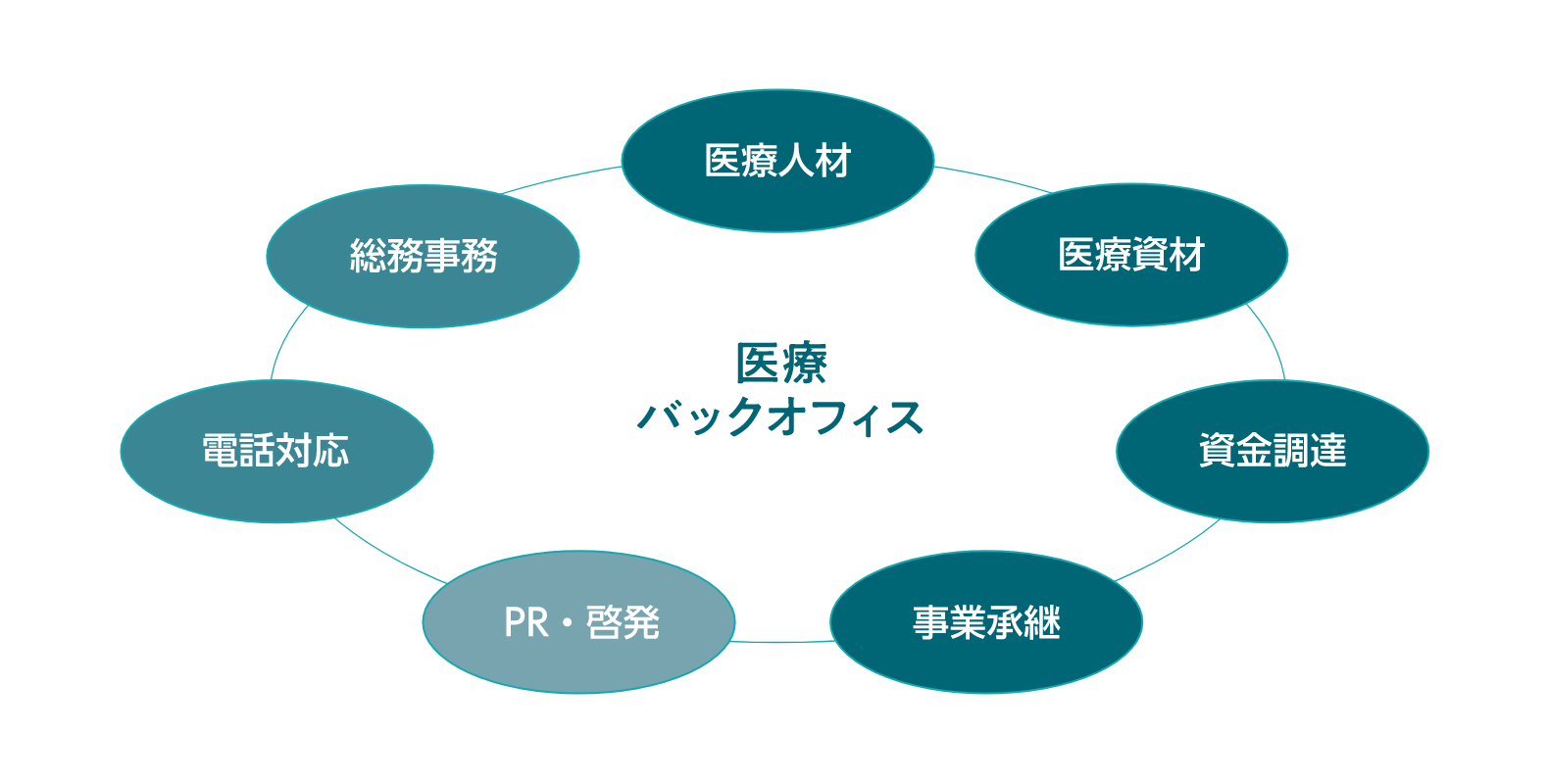
CEO of Central Medience Co., Ltd.
Ryutaro Nakagawa
In the sixth year since its founding, the group's annual sales are 6.6 billion yen. The business has expanded to include two group hospitals. The company also provides medical personnel referrals, wholesales medical supplies, and operates the healthcare media "Karada ni Ii Koto®." As a leading company in the medical field, the company supports the revitalization of hospitals and community medical care.
As the situation surrounding medical management becomes increasingly severe, it is essential to streamline back-office operations. However, there are limits to what can be done alone, and managers are being asked to change their way of thinking. Ryutaro Nakagawa, president of Central Medience, which operates a medical management support business, uses his experience in public health to propose that multiple medical institutions form an alliance to centralize back-office operations, thereby reducing the workload and cost burden on each hospital.

The 2012 medical fee revision came into effect on June 1. This time, it was a triple revision, and regardless of the number of hospital beds, all medical institutions, especially the administrative staff, would have been busy taking measures and responding. The majority of the medical costs provided by medical institutions are covered by medical fees, but various expenses required to continue medical treatment, such as work style reform for medical professionals, medical digital transformation, and responding to recent rising prices, are swelling. Furthermore, there has been a continuing shortage of human resources in recent years, and it is impossible to win against general companies with steadily increasing salary levels for human resources. Moreover, the cost of measures to prevent employees from leaving is not included in medical fees, so the more measures are taken, the more the deficit increases, creating a vicious cycle.
On the other hand, the hurdles for obtaining loans to medical institutions are getting higher every year, and funding will not be provided unless a highly viable business plan is presented. The days when loans would be given to medical institutions on the grounds that they are public institutions are over.
As the situation surrounding medical management becomes increasingly severe, it is essential to streamline back-office operations. However, there are limits to what can be done alone, and managers are being asked to change their way of thinking. In other words, now is the time for "loose solidarity" to survive the "hospital ice age." The back-office operations that must be undertaken are common to all hospitals, so the aim is to centralize these operations and reduce the workload and cost burden per hospital.
This proposal is modeled on the structure of airline alliances. Airlines are basically managed on an independent accounting system. However, by forming alliances, they can share maintenance personnel and equipment at airports in other countries, and jointly purchase aircraft to reduce the price of each aircraft, thereby improving the efficiency of the costs of continuing operations, attracting customers, and back-office operations.
In the medical world, there has long been a system in which multiple medical institutions jointly purchase drugs and medical supplies, but we believe that further benefits can be obtained by expanding the scope of this system. Therefore, we are providing support that expands the scope of back-office operations. Rather than providing only the services that medical institutions want individually, we base our services on forming total alliances. The reasons for this are 1) that we want to maximize the effects of alliances, and 2) that even if we take measures for only one of them, it is difficult to carry out medical procedures required for medical fees at the lowest possible cost.
The alliance is expected to have an effect on medical human resources and PR and awareness-raising activities. The medical field is an industry where it is easy to change jobs, so the mobility of human resources will not stop in the future. Rather, I think we should change our way of thinking and move forward with it as a way to revitalize the organization. However, in order to do this, it is essential to create a system that does not simply result in an outflow of human resources, and by forming an alliance between multiple hospitals, it will be possible to move human resources in accordance with each individual's career design.
In addition, while PR and awareness activities in the local area are essential to attract patients, creating attractive content that attracts the general public and repeating promotions to catch the attention of many people is not cost-effective for a single hospital. For this reason, many medical institutions are forced to give up. However, this can be made easier by forming an alliance.
On the other hand, it is also important to involve medical staff in improving the efficiency of back office operations, and the key to doing so is to make the operating income and expenditure public. At one hospital, when they started disclosing the operating income and expenditure to the medical staff leaders every month, not only did it increase their awareness of costs but it also increased their motivation, and each department began to work on ingenuity and improvements in daily medical treatment to find ways to balance the income and expenditure. As a secondary effect, this also led to an improvement in the quality of medical care.
In addition, there have been proposals from the field to utilize free time to make imaging equipment such as CT scans available to local clinics and small and medium-sized hospitals. This initiative has not only increased imaging diagnostic fees, but also promoted regional cooperation and increased the number of patients referred from clinics, which has ultimately led to an increase in the number of patients.
To encourage such spontaneous effects from within the hospital, it is important to ask doctors for their cooperation. At one hospital, the cost of medical supplies used in surgery was presented to doctors, and they were asked to review the quality of surgery (relationship between surgery time and results) and suitability, which led to the optimization of treatment. Similarly, at another hospital, by disclosing the operating income and expenditures to doctors, cost consciousness was increased, and a task shift in outpatient treatment, which had been slow to progress, progressed, and treatment became more efficient. Similar good examples can be found in various medical institutions that have worked to streamline back-office operations, and operating income and expenditures have turned from red to black.
And as a result of seeing a virtuous cycle of sustainable management and clinical activities, the morale of medical staff rises, and better medical services are provided, creating a virtuous cycle that further stabilizes medical management. Through examples like this, we are convinced that forming alliances with multiple medical institutions and centralizing back-office operations will open new doors for hospital management that is fighting for survival.
An example of back office work in the medical field
